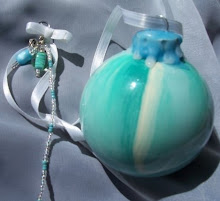
Possessing the power to bewitch or bedevil humans with their illusions, known as glamours, fairies gradually found their way into the myth and folklore of many European cultures.
The inhabitants of pre-Christian Ireland also believed that Samhain was a time when a strange dark-skinned race of goblin like creatures with occult powers emerged from their secret hiding places. Resentful of the human race for taking over the land that was once theirs, they delighted in creating as much mischief as possible. Some were merely pranksters, while others were more evil natured and regarded as dangerous. According to legend, every seven years these creatures would steal human infants or small children and then sacrifice them to their god.
Because Samhain was a night on which the fairy mounds stood wide open, all manners of fairies, mostly baneful, were free to walk the earth. Also, any person careless or unfortunate enough to step upon an open mound would fall victim to permanent enchantment by a fairy spell and either succumb to madness or waste away from a mysterious and incurable illness. However, according to Celtic folklore, on Samhain night, when neither human nor fairy needed any magickal password to enter, an open fairy mound could, like quicksand, pull an unsuspecting mortal into the world of fairies, where he or she would be doomed to remain forever.
Samhain was more than a night when spirits walked the earth. Like the other great festivals dominating the old Celtic calendar, Samhain was also connected with fertility of the earth and its animals. It was a time when the final harvest was celebrated and when farmers throughout the land brought their livestock down from the pastures and made preparations for the coming of winter.
In Ireland, the Tuatha de Danann are active just before Samhain and will bless your home for a small portion of your harvest. But any crop left unharvested after sundown on October 31st is taken by the Phookas, baneful faeries who render the crop unfit to eat. Spelled Pwca in Wales, these baneful faeries remain active until spring.
Just before Samhain the final harvest had to be gathered in. Whatever was left in the fields after this time would be taken by malevolent faeries. But just in case some of these creatures wished to jump in early, bells were often tolled all during the day of October 30th, the last day of the harvest, to ward off encroaching faeries as the work was being done. An old Mother Goose rhyme reflects this ancient custom with the words, "The boughs they do shake and the bells they do ring, so merrily comes our harvest in..."
In general, baneful faeries are more active during the last quarter of the waning moon, and helpful faeries are more active at the waxing. Inland water faeries are generally friendly, while sea faeries are more malevolent, a concept which no doubt grew out of the dangers of sea travel. Good faeries are commonly more active from Beltane to Samhain, and the more mischievous ones from Samhain to Beltane.
To protect yourself from baneful faeries at Samhain, hang dried apples or dried heather over your doors.
A Fairy Spell
A spell to enable a person to perceive fairy rings and to hear the sound of fairy music calls for the following herbs to be gathered, diced, and then baked into a tiny oaten cake:
bay, mistletoe, rue, thyme, vervain, and yarrow.
Anoint the cake with a bit of honey and three drops of rose oil.
On Halloween night, as the moon of enchantment is rising in the sky above, place the sweetened cake under a tree or a bush in your garden as an offering to the fairy-folk. According to witches lore, if your magick is true and your heart filled only with sincerity, the fairies will open their secret and wondrous world to you right before your very eyes.
The other times of the year when such a spell is said to be effective are: at moonrise on Lady Day (March 25th), Easter, the first day of May (known as May Day, Beltane, and Walpurgis), the Summer Solstice (June 21st), Christmas Eve and Christmas Day.
There were hundreds, perhaps even thousands, of different types of faeries who inhabited the ancient Celtic lands, but in Ireland (where it was once believed that all cats were actually fairies in disguise) it was the Phooka (pooka) that was particularly feared on Samhain, when it took great pleasure in tormenting humans. The supernatural’s of the night possessed the power to shape shift, and they were known to often take on the disguise of a black horse with hideous features.
The Celts devised numerous charms to protect themselves against the Little People. The ringing of bells (especially church bells) and the hanging of iron horseshoes above doorways were two methods believed to be effective in keeping spiteful fairies at bay. Many people in various parts of the world still believe that iron is a metal that repels and protects against all manners of fairies. It is commonly used in the making of magickal amulets and talismans for protection.
I hope you enjoyed the latest Samhain post.
Brightest Blessings,
The Celtic Witch
)0(
Saturday, October 25, 2008
Samhain Faery Myth and Magic
Posted by Magickal Enchantments at 11:03 AM
Labels: celtic magick, faeries, faery beliefs, faery magic, faery spells, fairies, samhain, samhain myths and magic, witchcraft
Subscribe to:
Post Comments (Atom)




1 comments:
This was really interesting. This is the first Samhain article I have read that spoke about the fairies and it was very interesting reading. Thanks for sharing.
Post a Comment